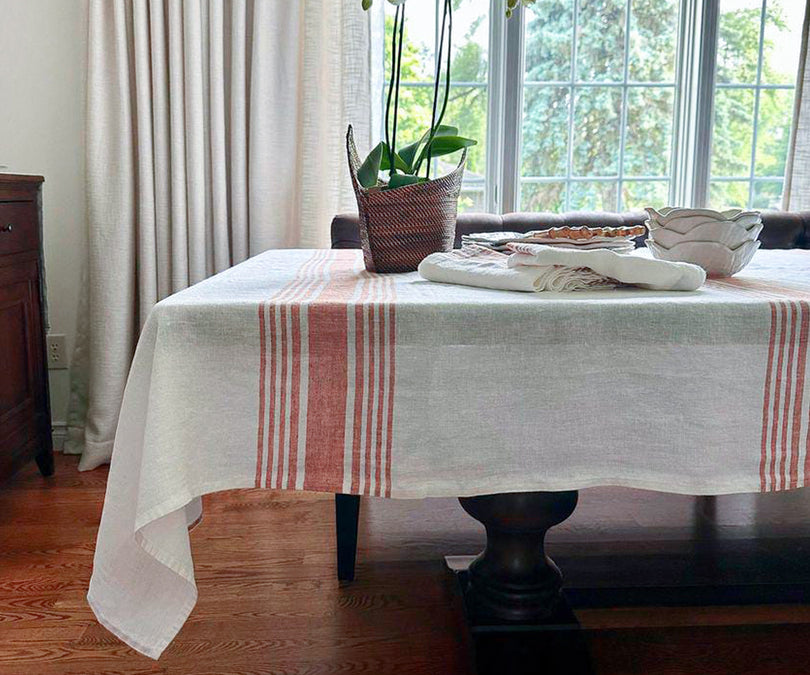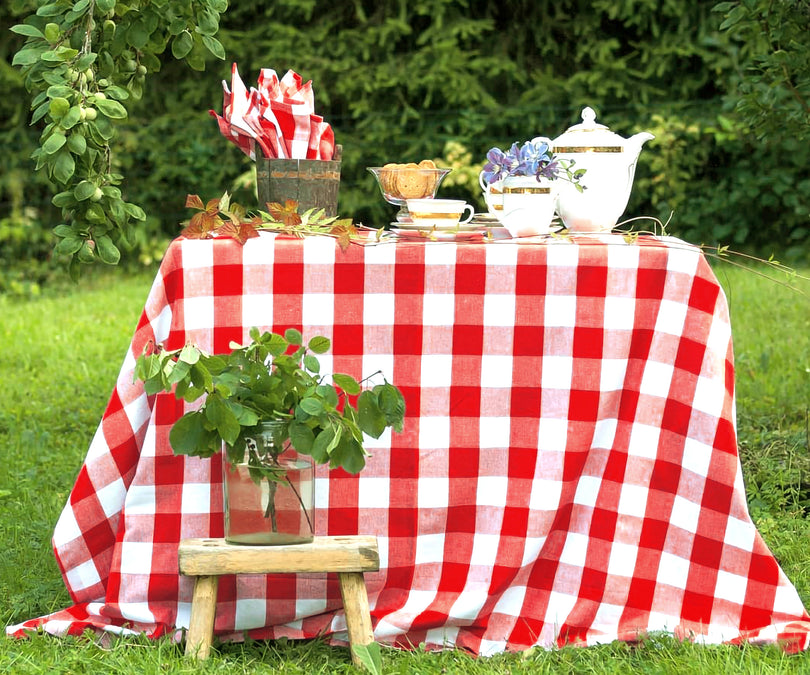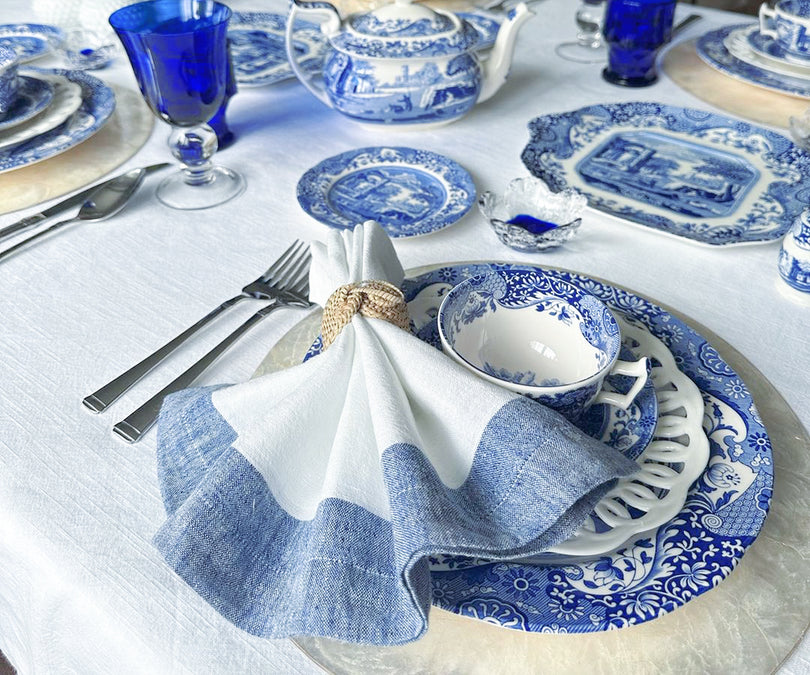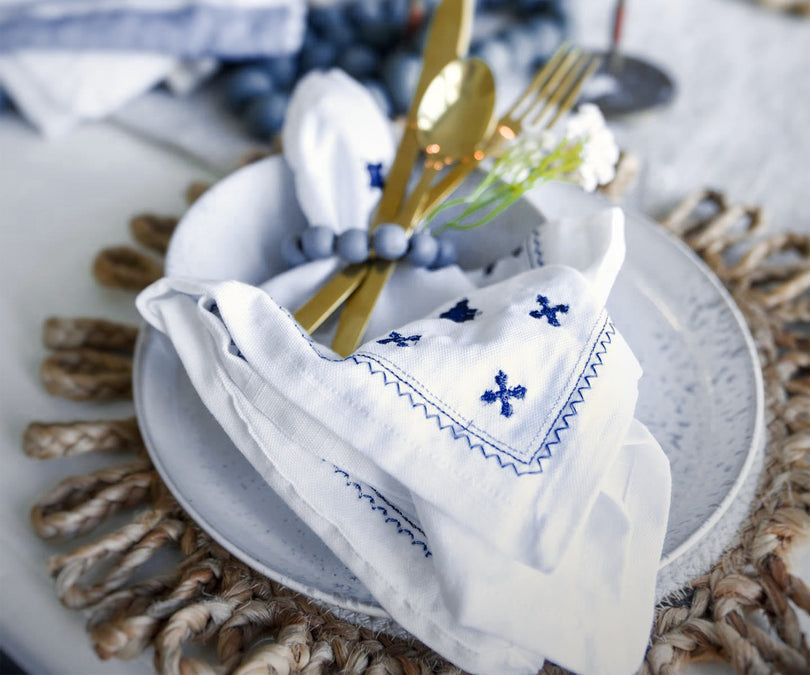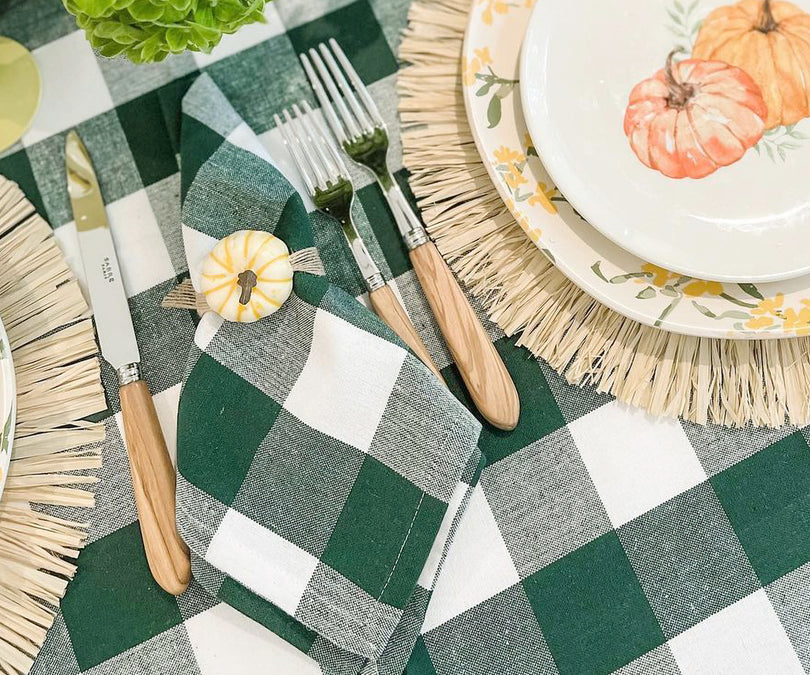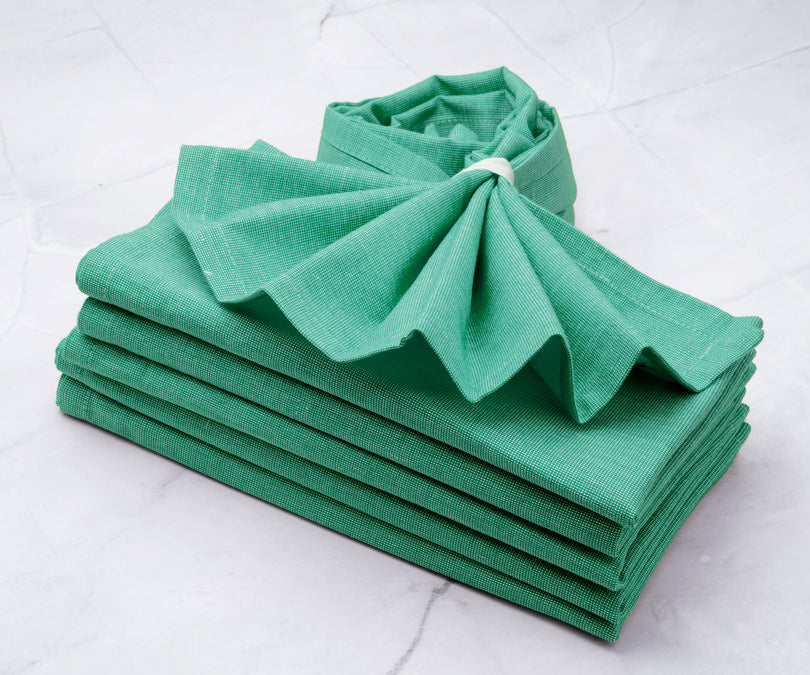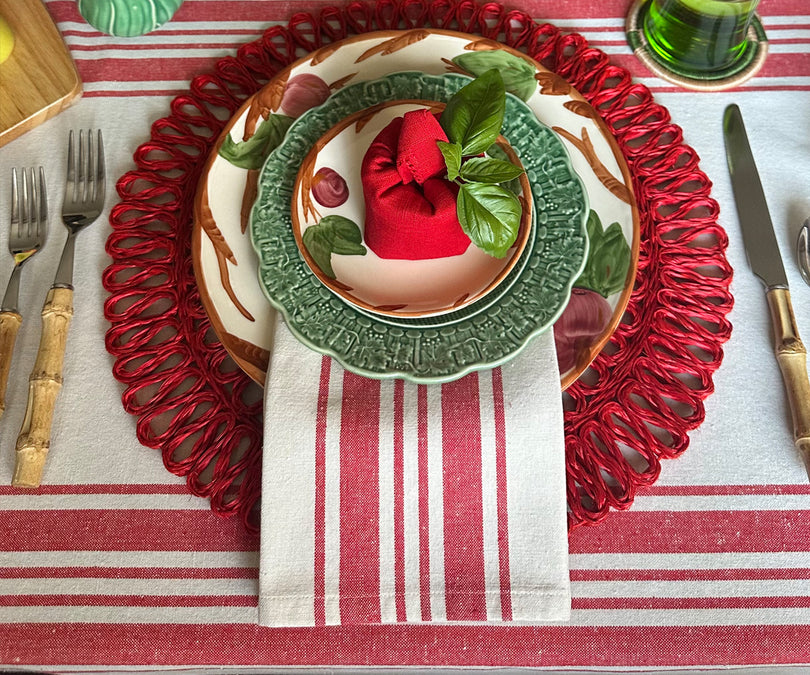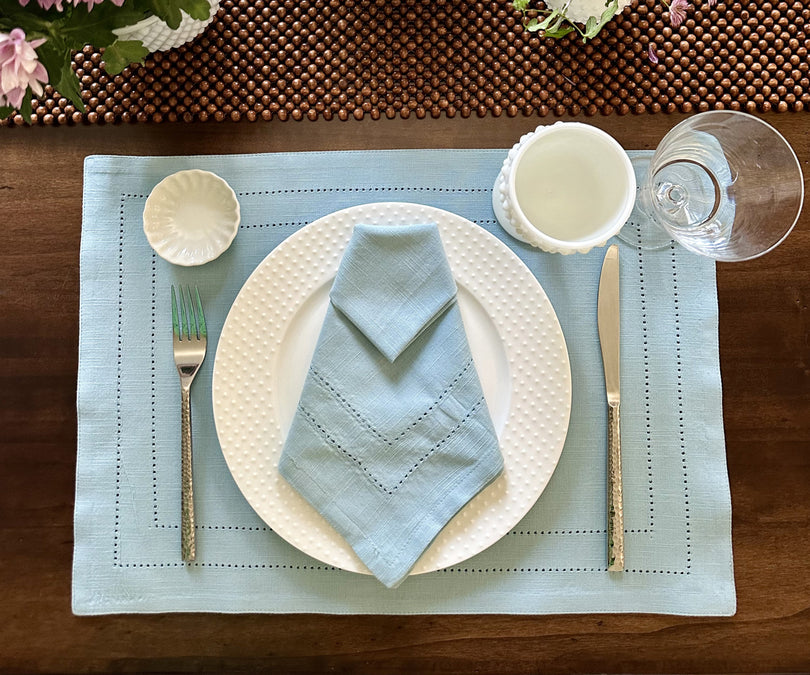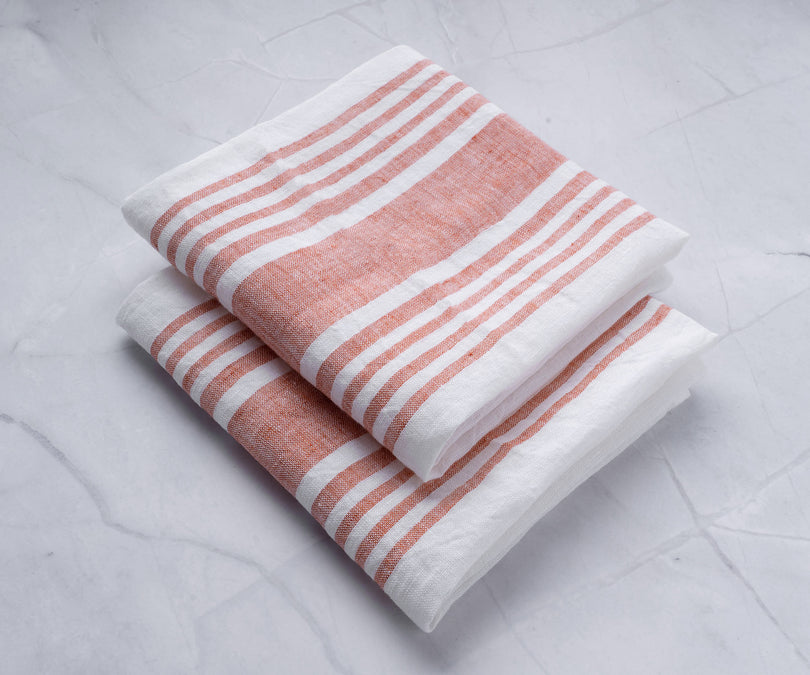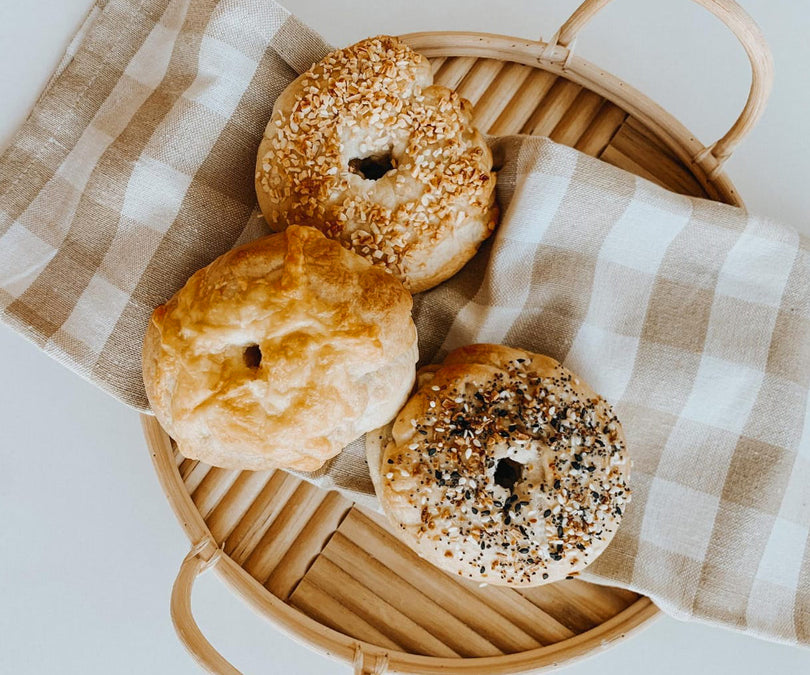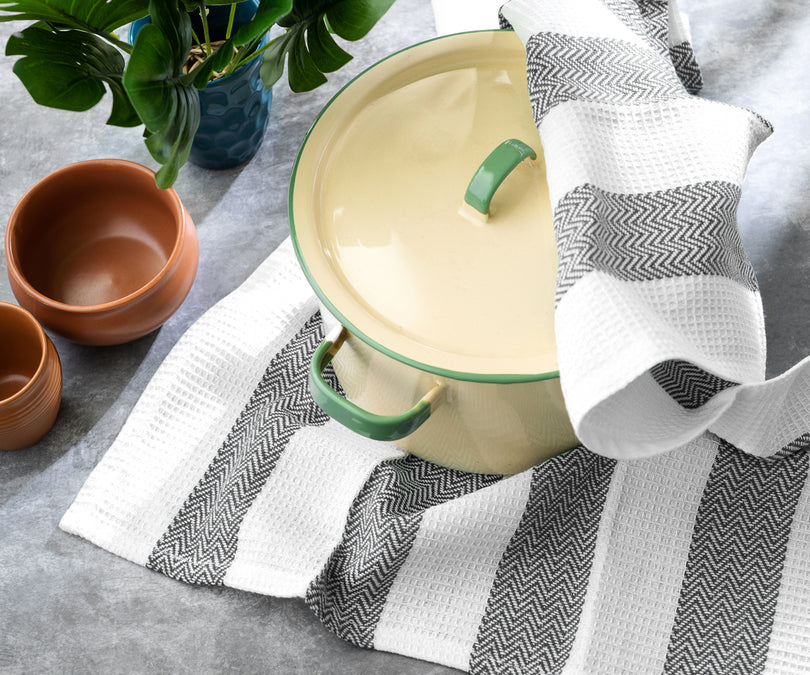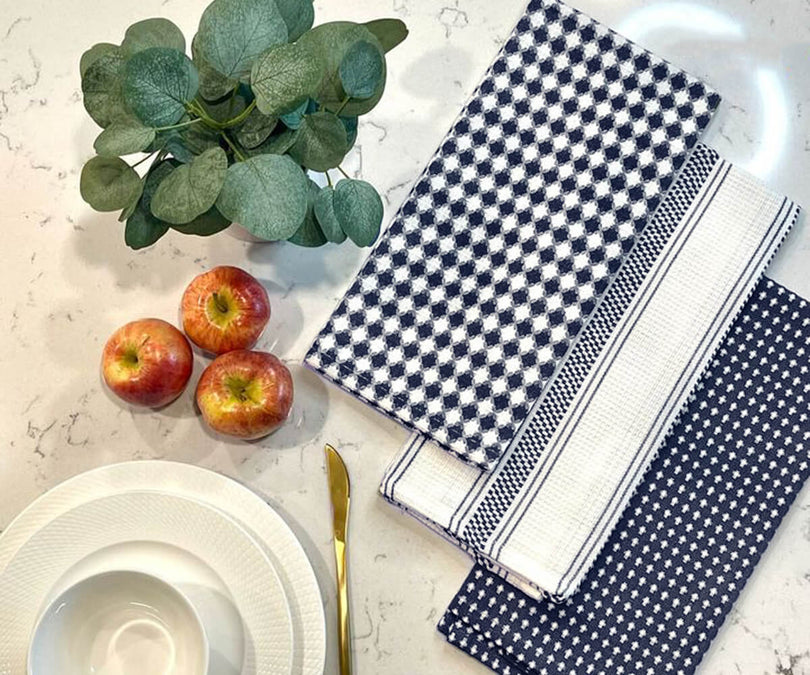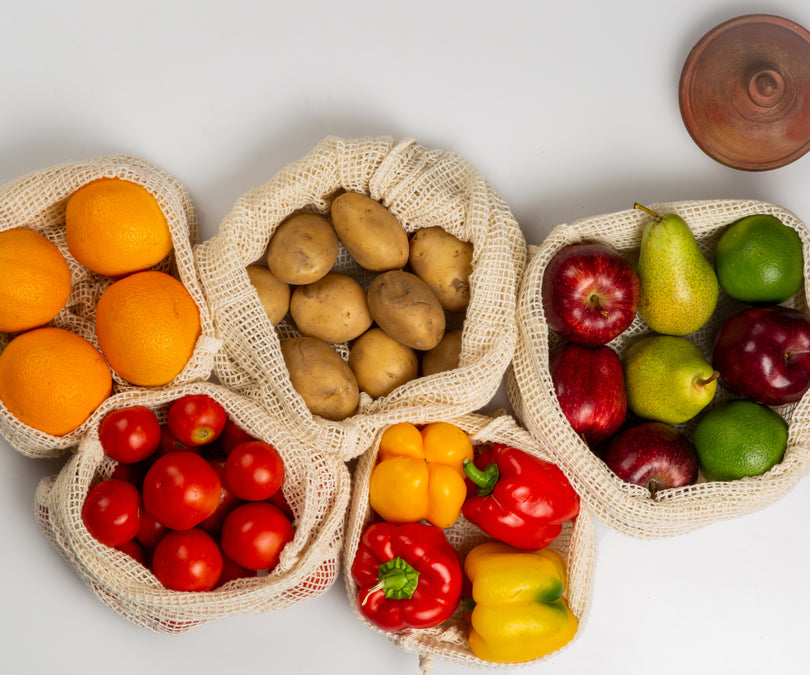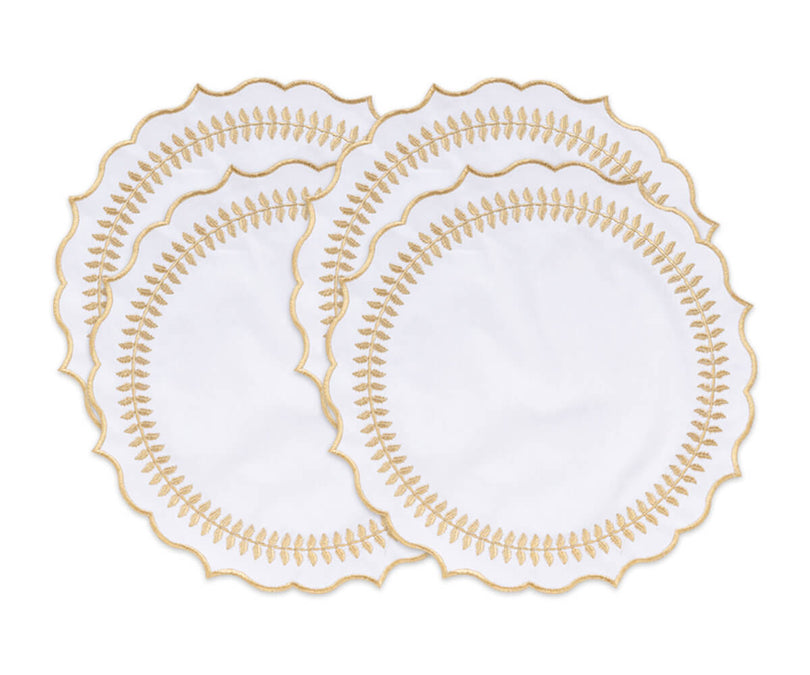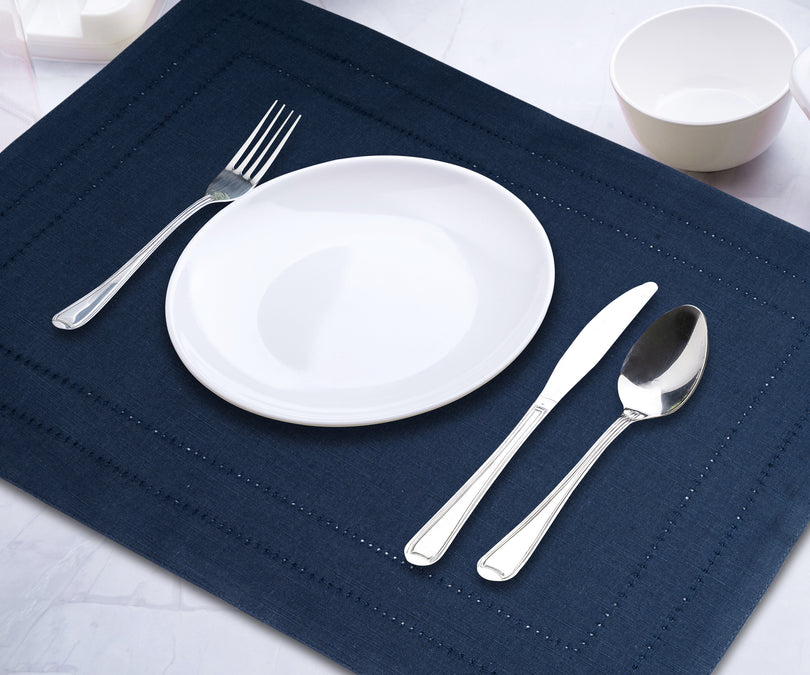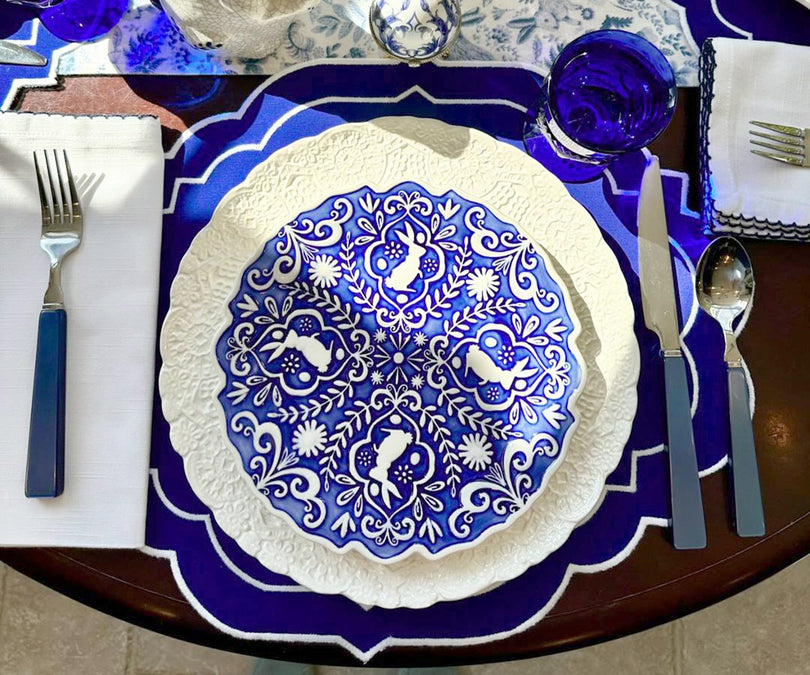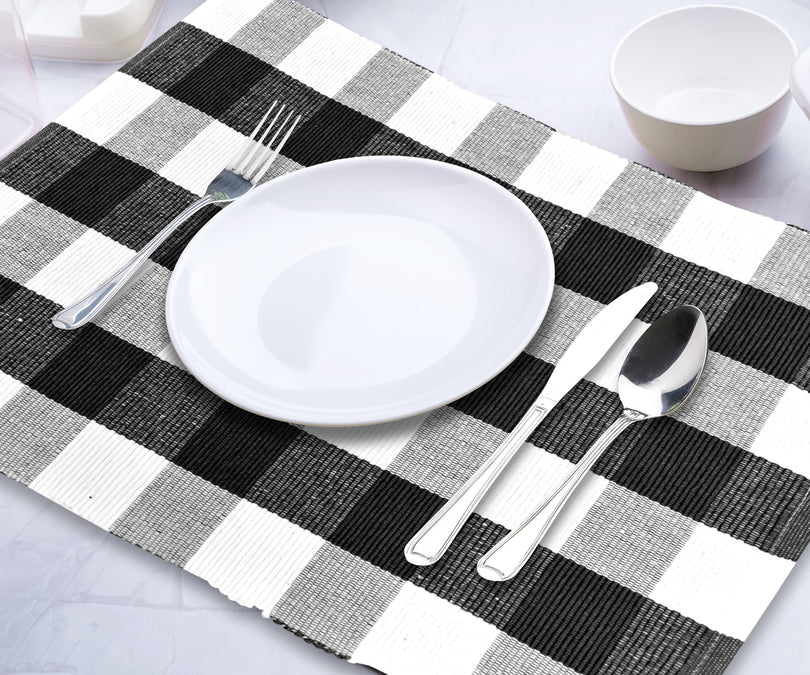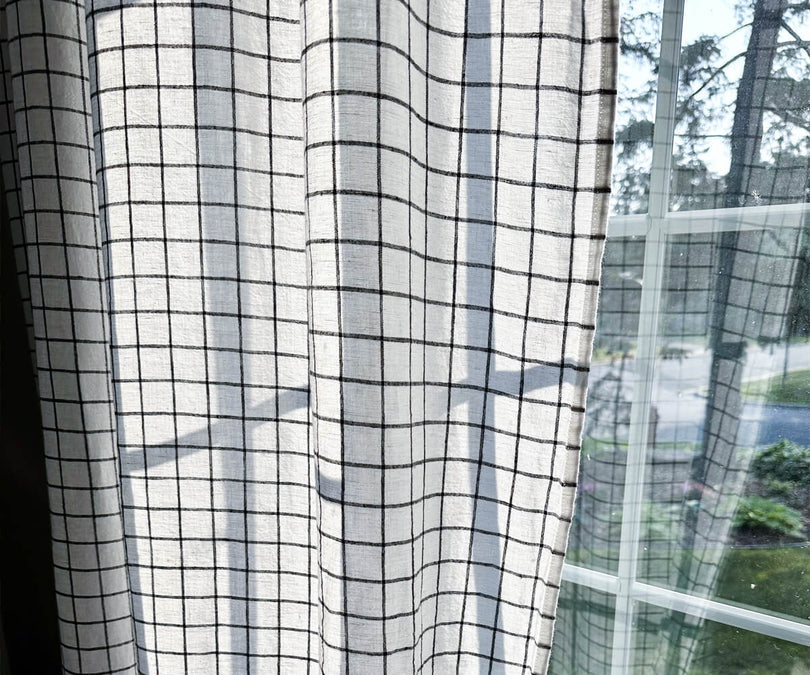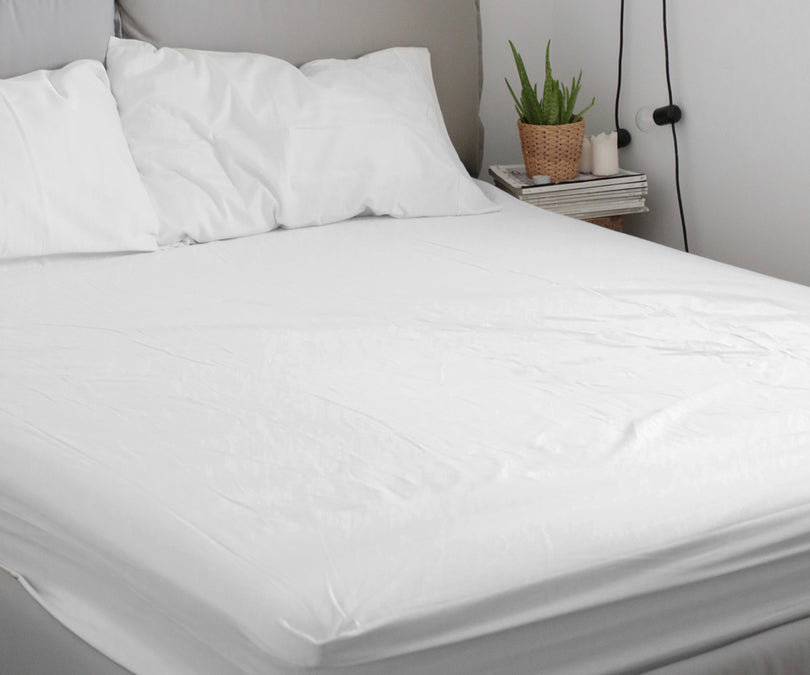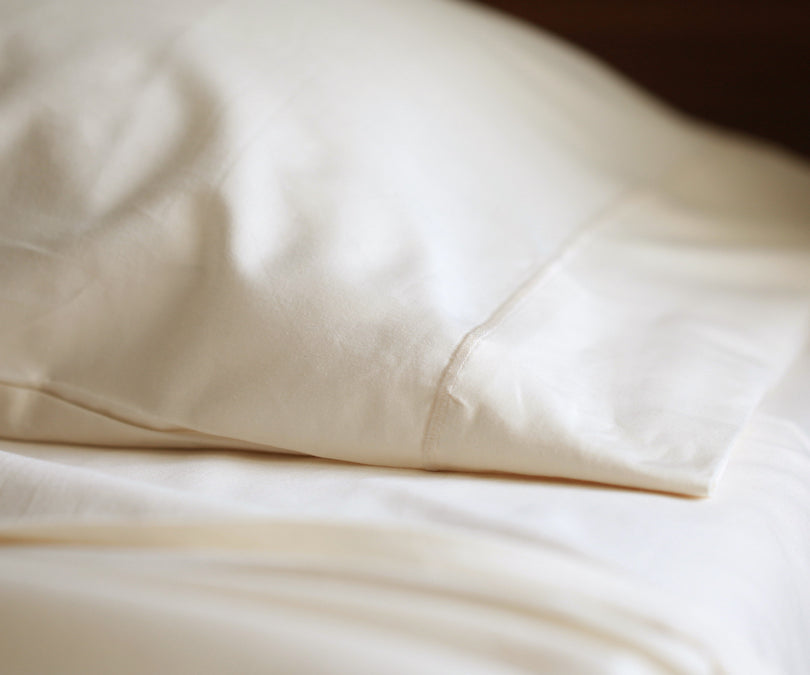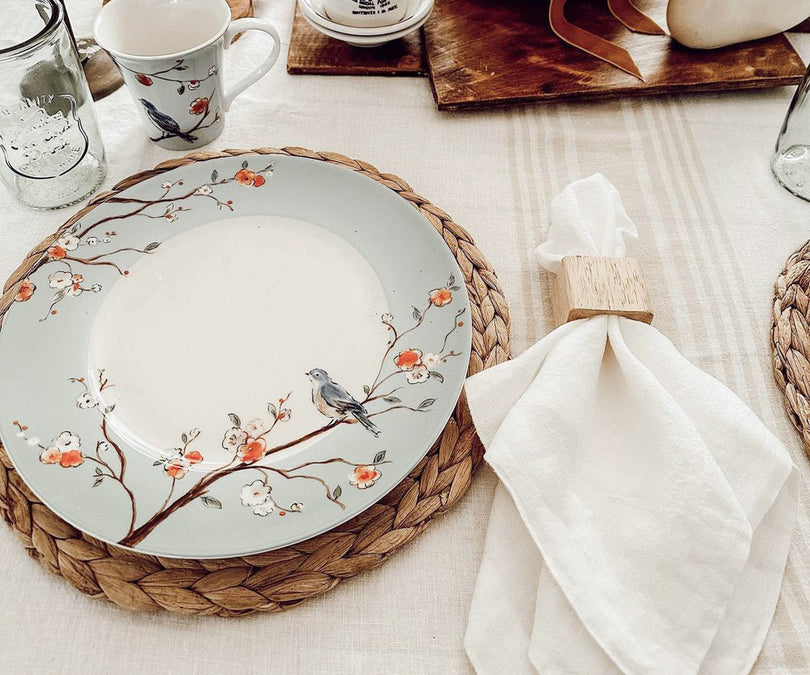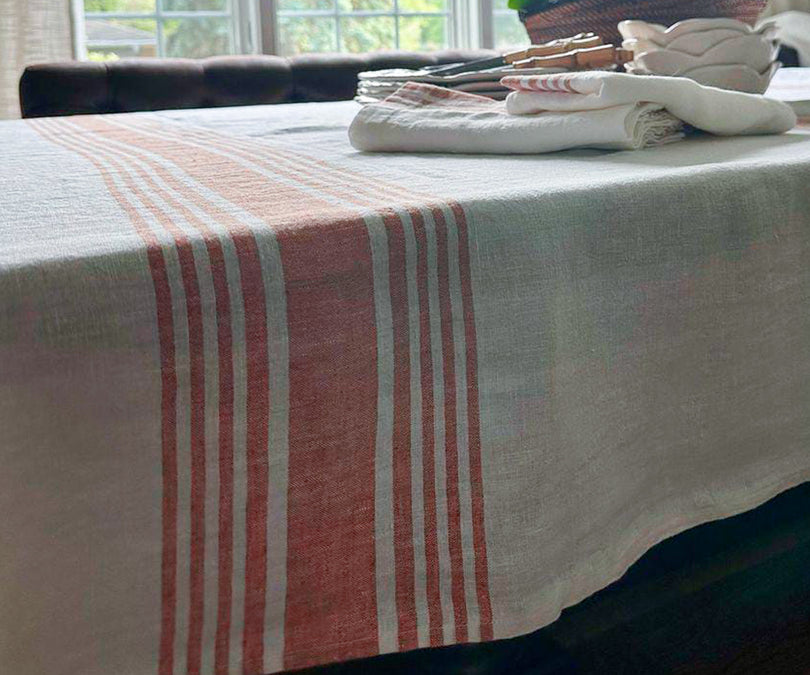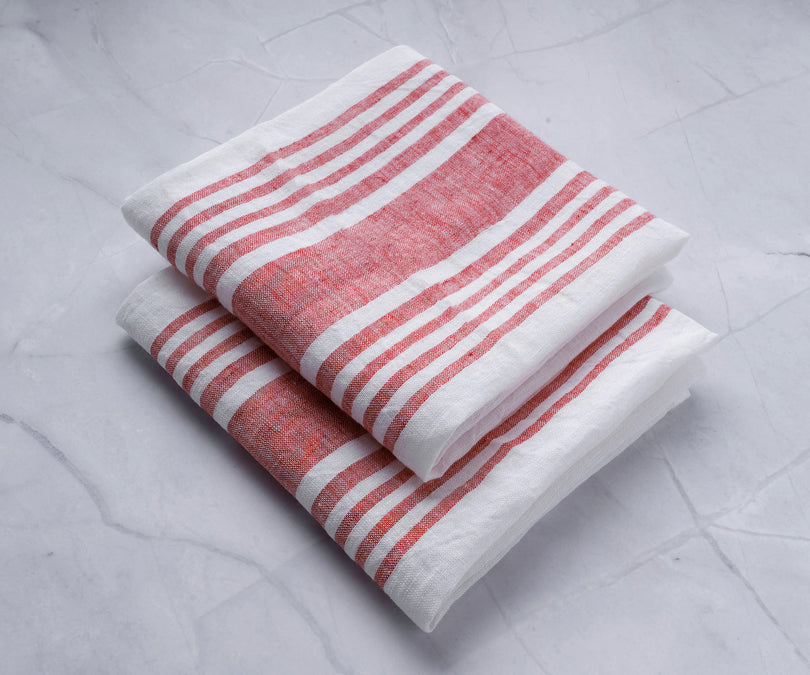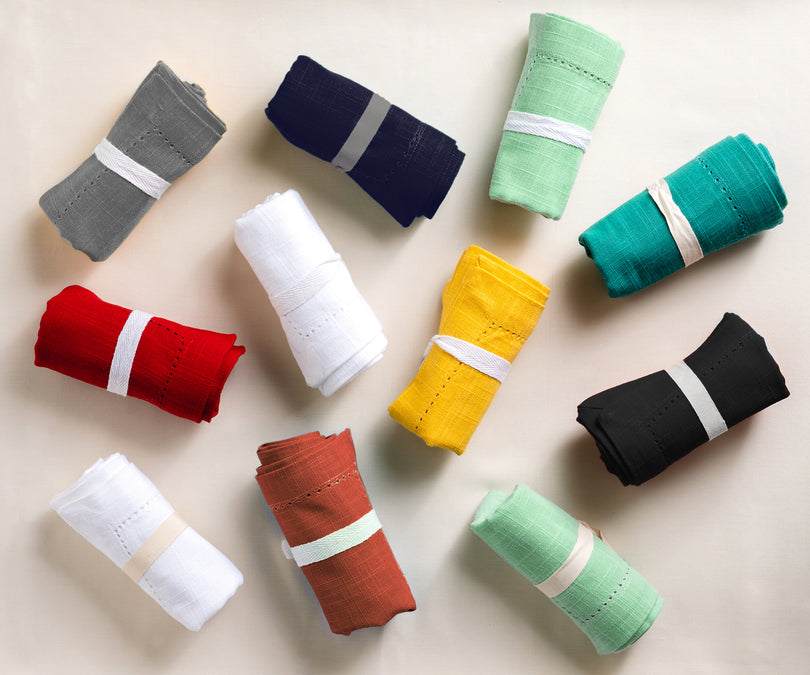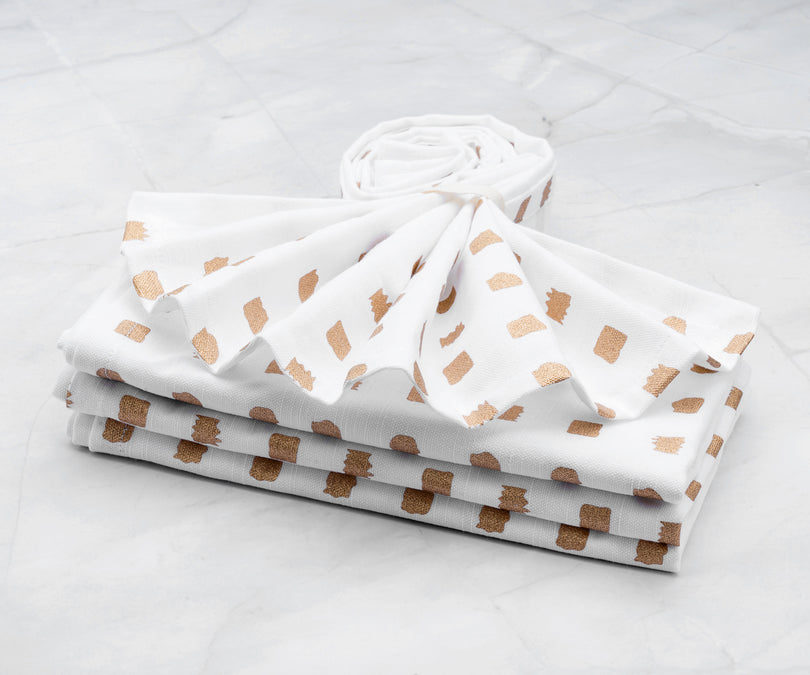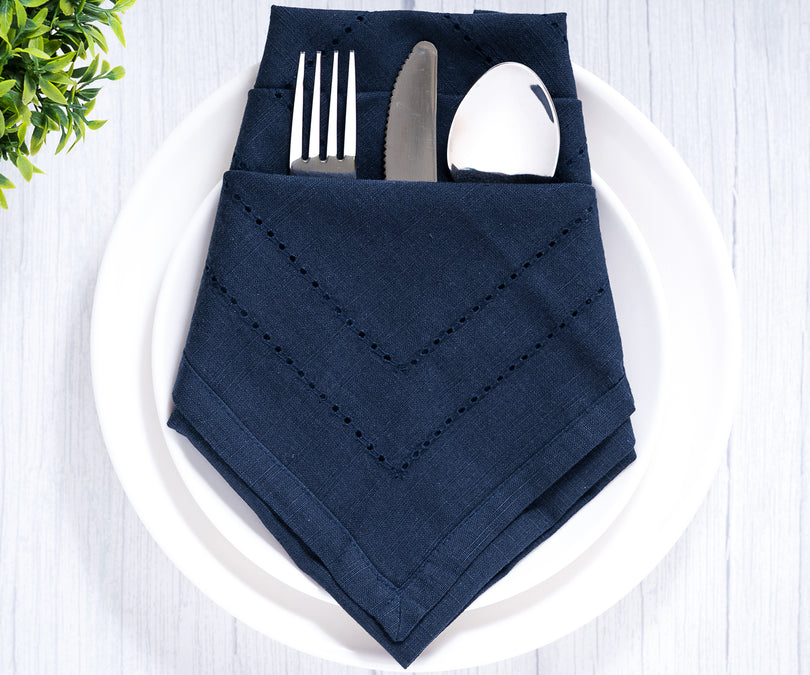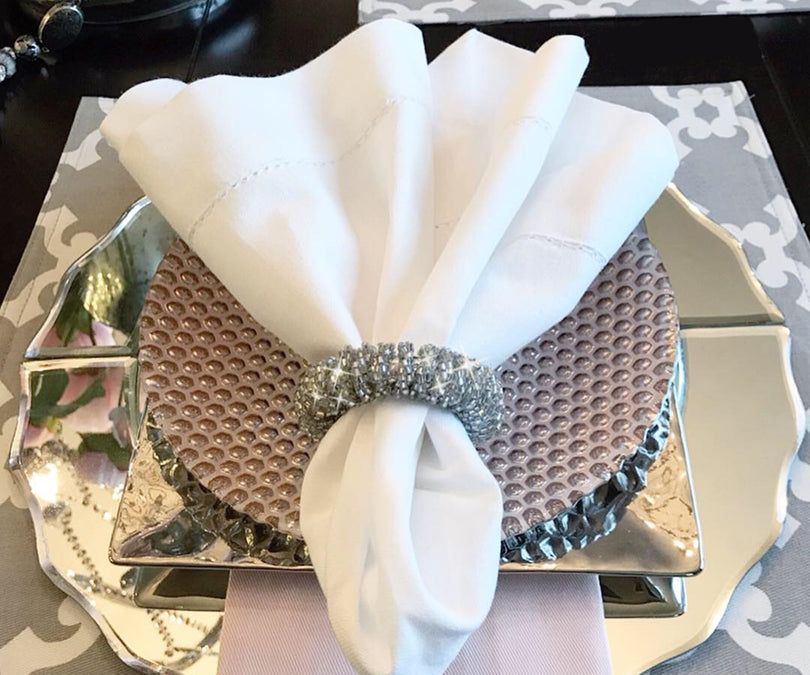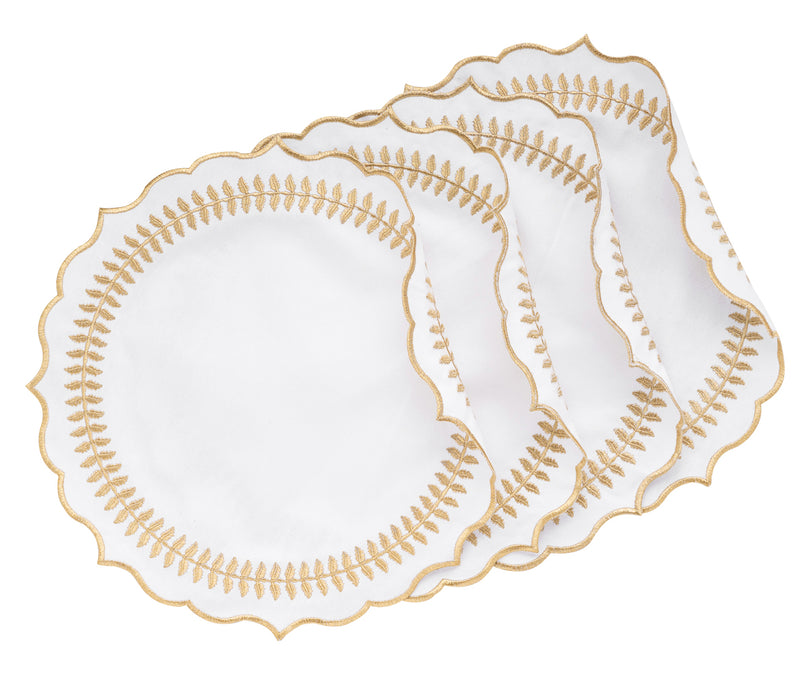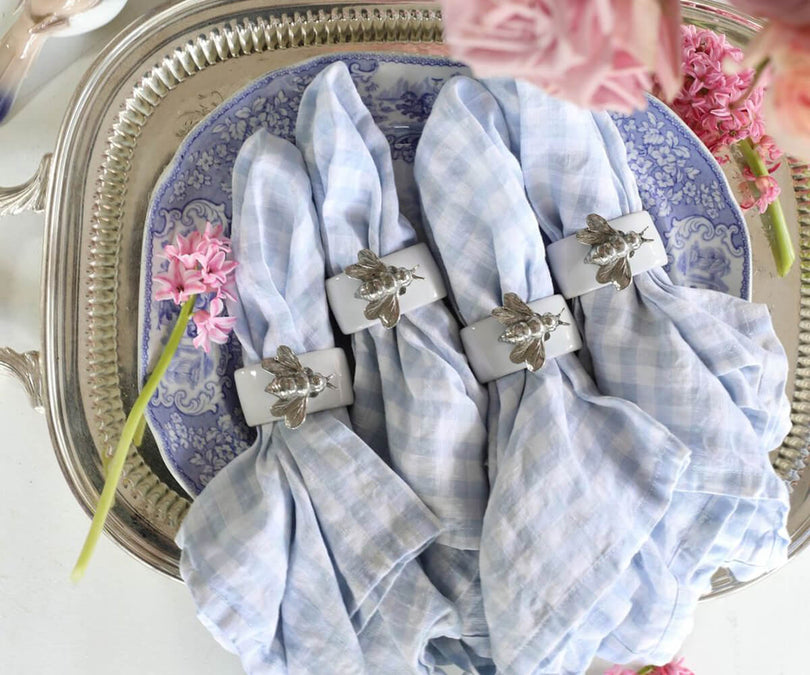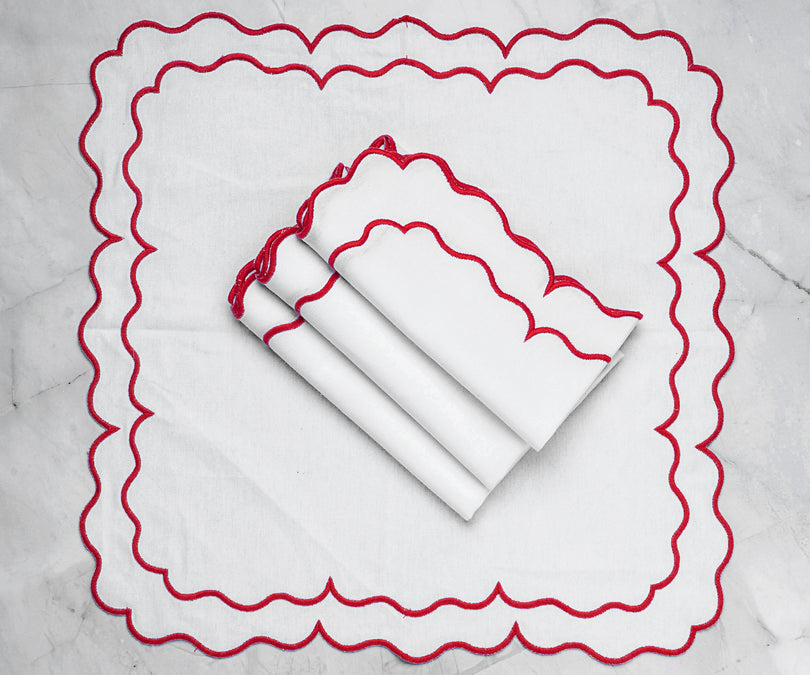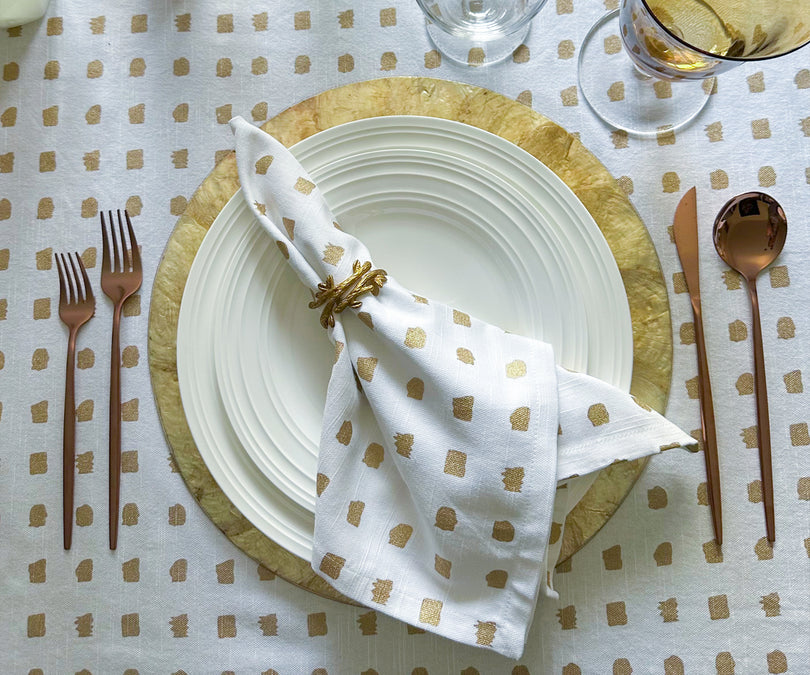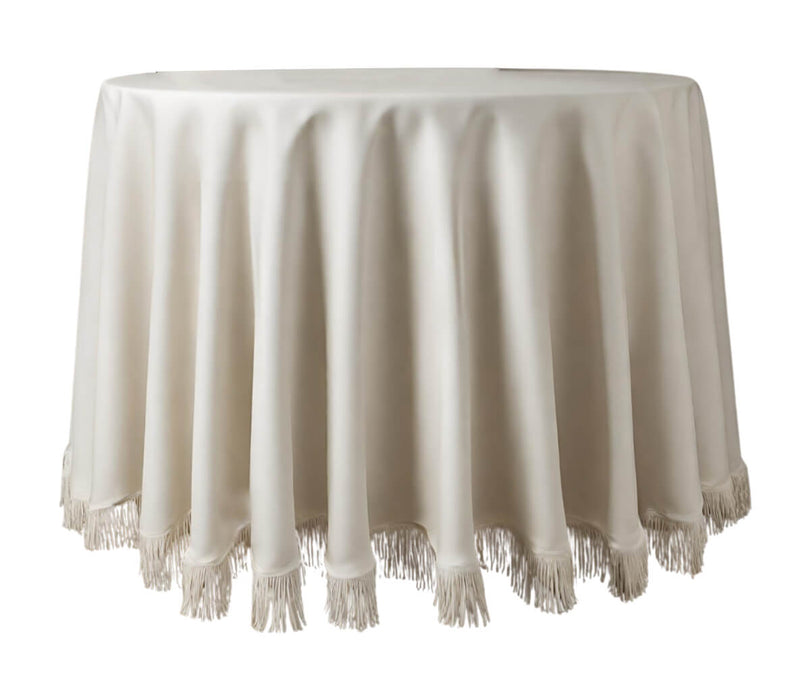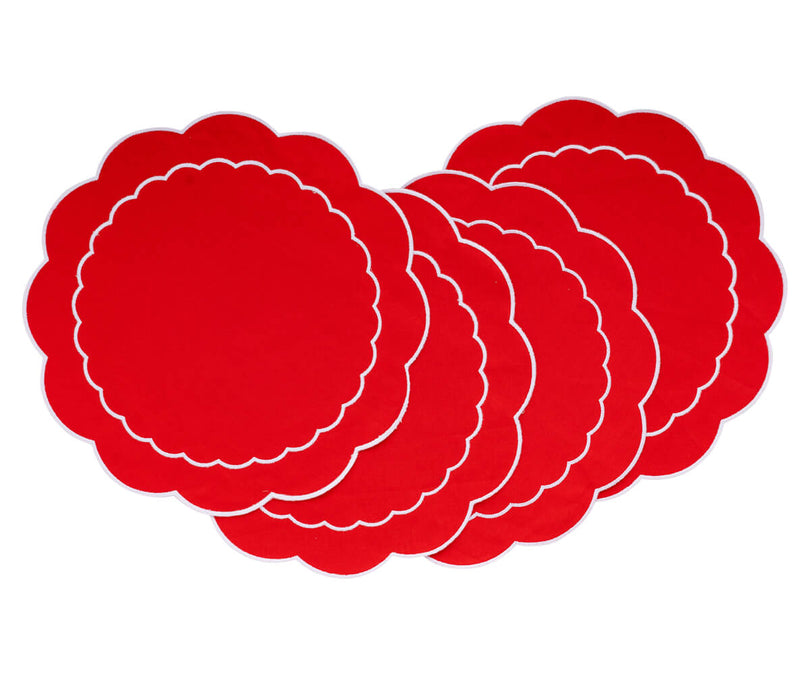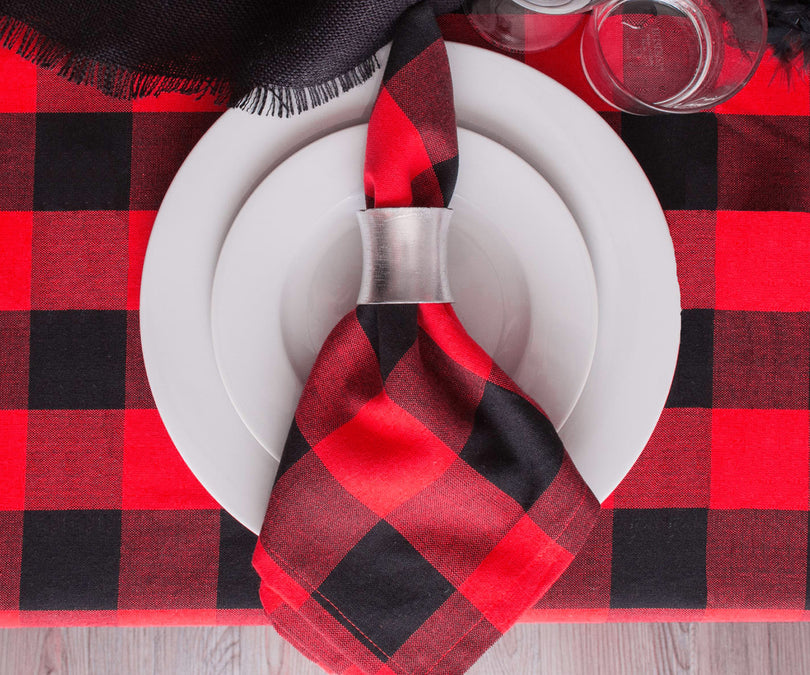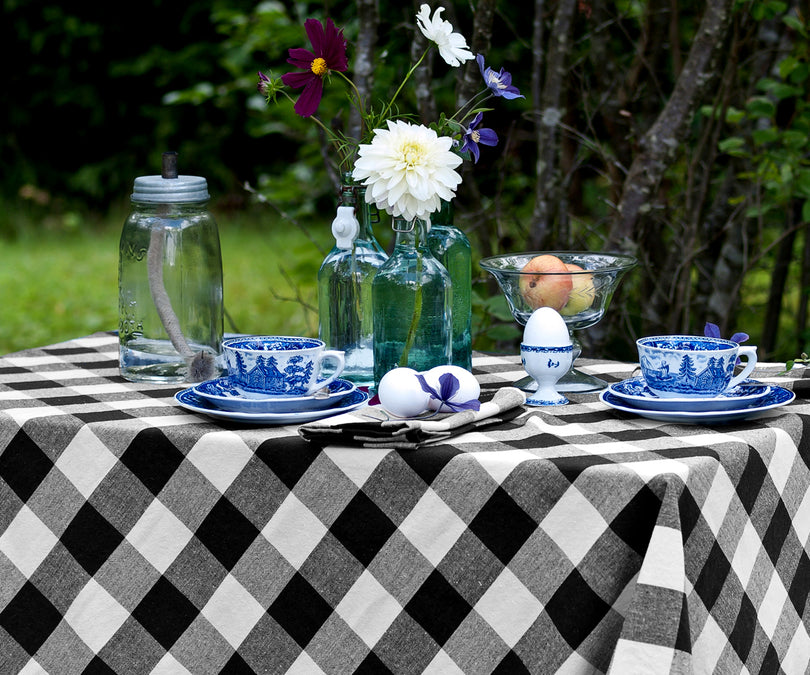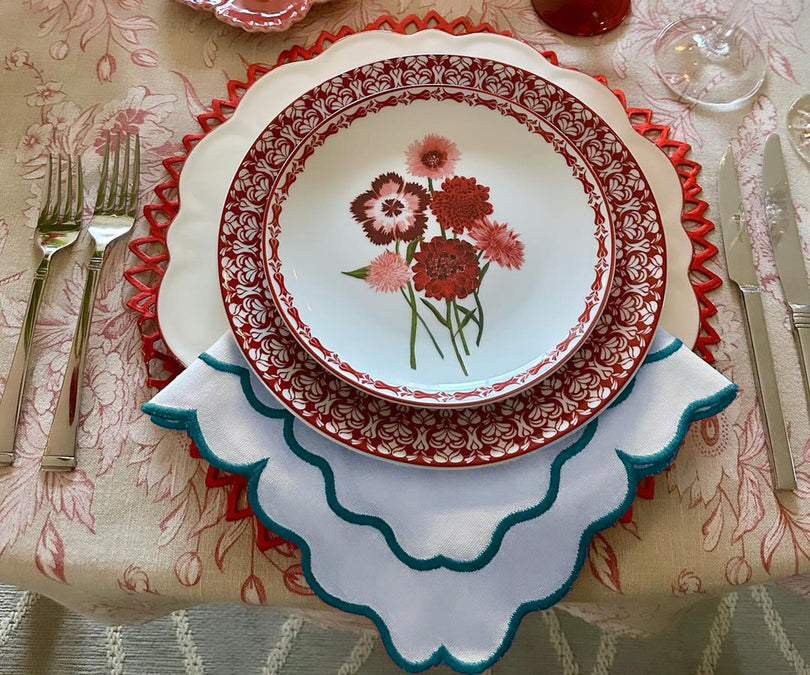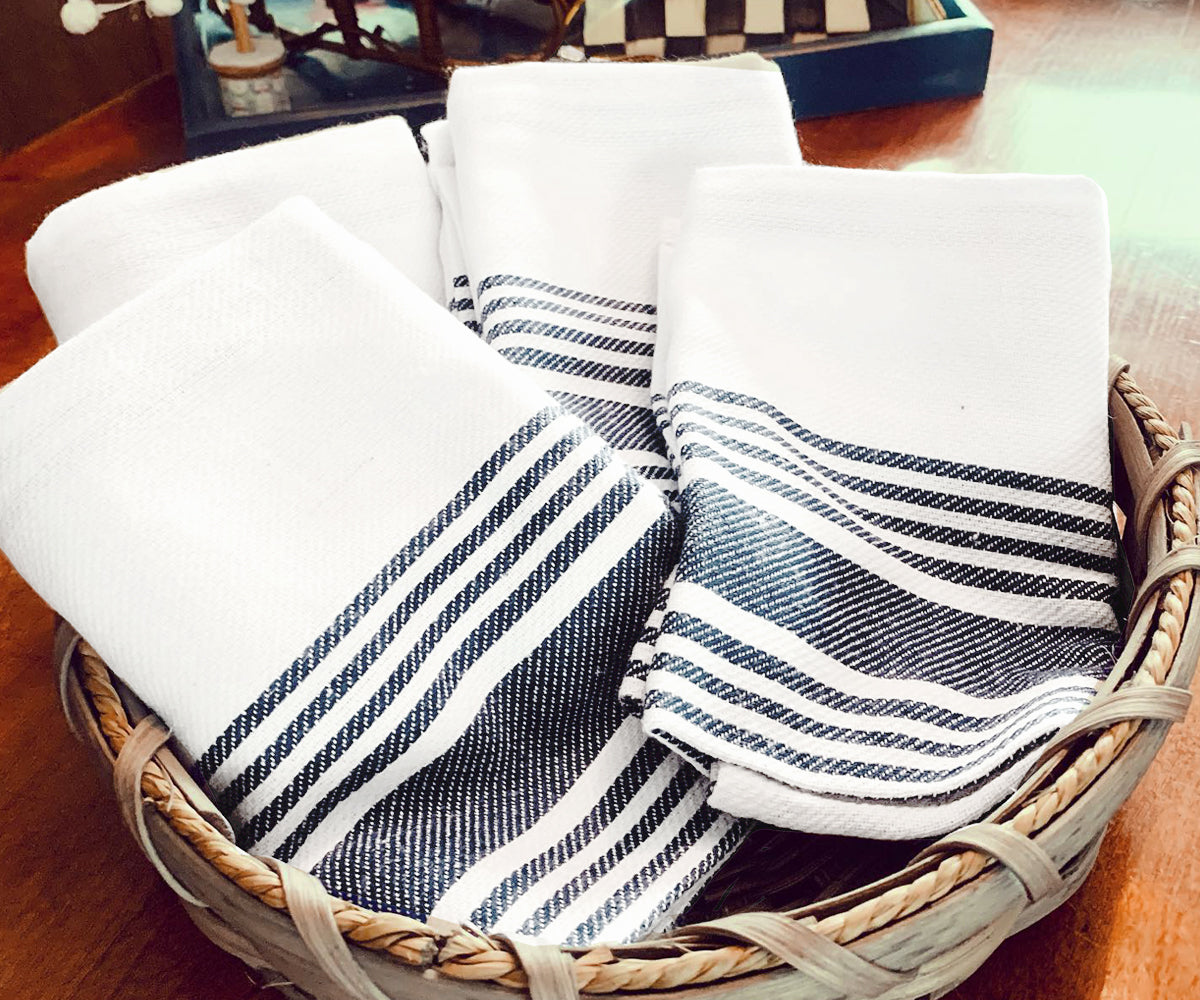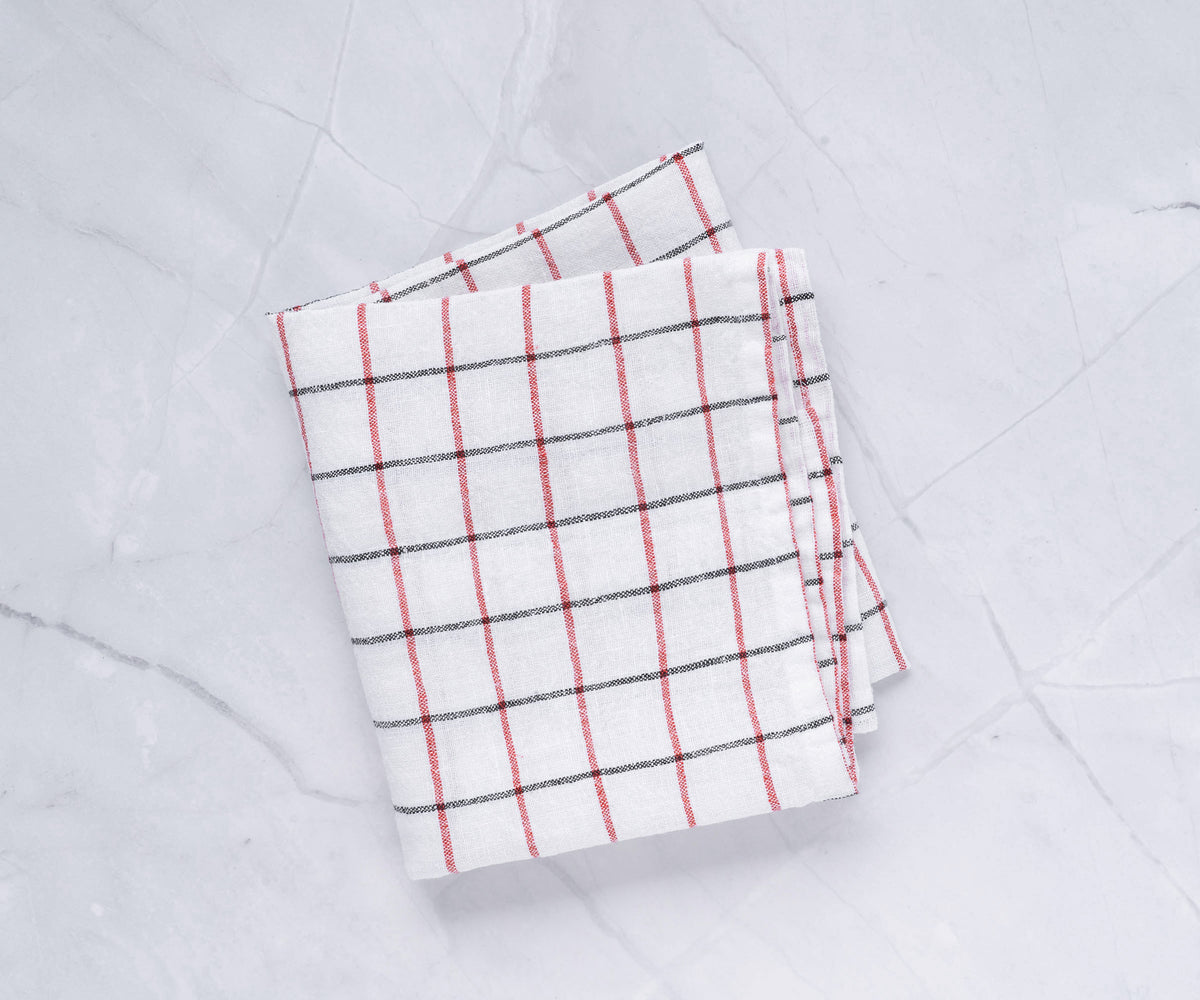
Linen- a traditional material, is often used to create tea towels. The gentle fibers of linen are ideal for delicately polishing dishes and fine china, ensuring a lint-free and non-damaging cleaning experience. These dish towels retain quality even after multiple uses, offering quick-drying and instant absorption capabilities.

Cotton -
Tightly woven cotton is optimal for crafting high-quality kitchen towels due to its exceptional absorbency, softness, and ability to soak up significant moisture effectively. Moreover, cotton towels exhibit remarkable strength and durability, enduring numerous wash cycles without compromising their integrity. Additionally, their soft texture ensures effortless prevention of smudging and watermarks. Cotton towels balance gentleness and resilience, making them ideal for absorbing liquids while withstanding repeated use and washing.

What is the most effective method for washing kitchen towels?
For optimal care, it is advisable to wash cotton kitchen towels by soaking them in warm water immediately after purchase. This step aids in eliminating any residual oil from the manufacturing process and activates the towels' absorbency. When dealing with colored tea towels, wash them separately from other laundry to prevent color bleeding. Over time, all towels are prone to staining and bacterial build-up, so handling tea towels with care during washing is crucial. It is recommended to utilize detergent instead of fabric cleaner, as fabric conditioners and softeners can leave behind a water-resistant layer that hinders moisture absorption, reducing the towel's efficacy. To preserve delicate fabrics commonly used for tea towels, it is preferable to air-dry them by hanging them instead of using a dryer. These towels' smaller size and thinner nature facilitate rapid drying when suspended on a washing line or clothes rack.

What are the differences between tea towels and flour sack towels?
Tea and flour sack towels are often used interchangeably, referring to flat-woven towels that excel at drying surfaces without leaving any lint. Originally, tea towels were thin linen cloths utilized in the 18th century by affluent English women for polishing fragile dishware. Over time, in America during the Great Depression, tea towels evolved into what is now commonly known as flour sack towels or cotton dish towels. Resourceful homemakers ingeniously repurposed cotton flour sacks, cutting and sewing them to create tea towels and other items. Tea towels typically possess a thin construction and serve the primary functions of drying, polishing delicate objects, and adorning kitchen spaces. On the other hand, flour sack towels tend to be thicker, more robust, and exhibit superior absorbency, making them highly versatile in their applications.
